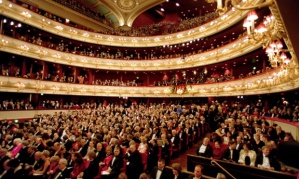“People haven’t always been there for me, but music has”
Taylor Swift (Good Reads)
(Video Credits David A. Cox)
Whether you’ve got your head in your dissertation, you’re commuting to work at 6am or you and your housemates are cranking up the tunes before Cheesy Tuesday’s there is always room for music within our everyday lives; I always seem to find somewhere for it to go.
Enter Spotify.
Launched in 2008 in Sweden, this company enable its users to access a vast array of music for free, create personal playlists and connect with other users. For those with a more lucrative wallet, you can enjoy the luxury of downloaded music without the need for the internet.
Ekinsmyth (2011) comments on everyday spaces becoming a key focus amongst scholars. The role that Spotify plays in shaping such spaces can be seen through the user’s ability to fill their own personal space with their personal music choice. Users of Spotify can also follow other users, see their personalized playlists and with a huge range of music available I am confident in suggesting even those with the most obscure of music tastes will find something they will enjoy.
An important consideration to make in the example of Spotify, is its technological aspect. There is no denying the ever shifting and evolving nature of the creative industries as new technologies and ideas are born (Potts et al. 2008). It’s pretty extraordinary, if we step back and look at it, that we can access personally selected music, from a range of genres, artists and decades, all using just one programme. Furthermore, companies such as Spotify are said to contribute to unconventional economic spaces, in this case ‘aspatially’ in cyberspace (Ekinsmyth, 2011). Indeed, the days of walking to the record shop to purchase the latest single on a vinyl record (what? I hear you say…) are long gone.
As my good friend Taylor states above – music is always there for you. No, no…Spotify is always there for you. Or at least for its 20million users…
Spotify. Music for everyone. Music for ME.
References
Ekinsmyth, C. (2011). Challenging the boundaries of entrepreneurship: The spatialities and practices of UK ‘Mumpreneurs’. Geoforum, 42(1), 104-114
Good Reads http://www.goodreads.com/author/quotes/1036517.Taylor_Swift (last accessed 20.03.2015)
Potts, J., Cunningham, S., Hartley, J., & Ormerod, P. (2008). Social network markets: a new definition of the creative industries. Journal of cultural economics, 32(3), 167-185.
Related Links
Spotify Website https://www.spotify.com/uk/
Spotify Facebook Page https://www.facebook.com/SpotifyUK?brand_redir=1
Spotify Twitter https://twitter.com/spotify













